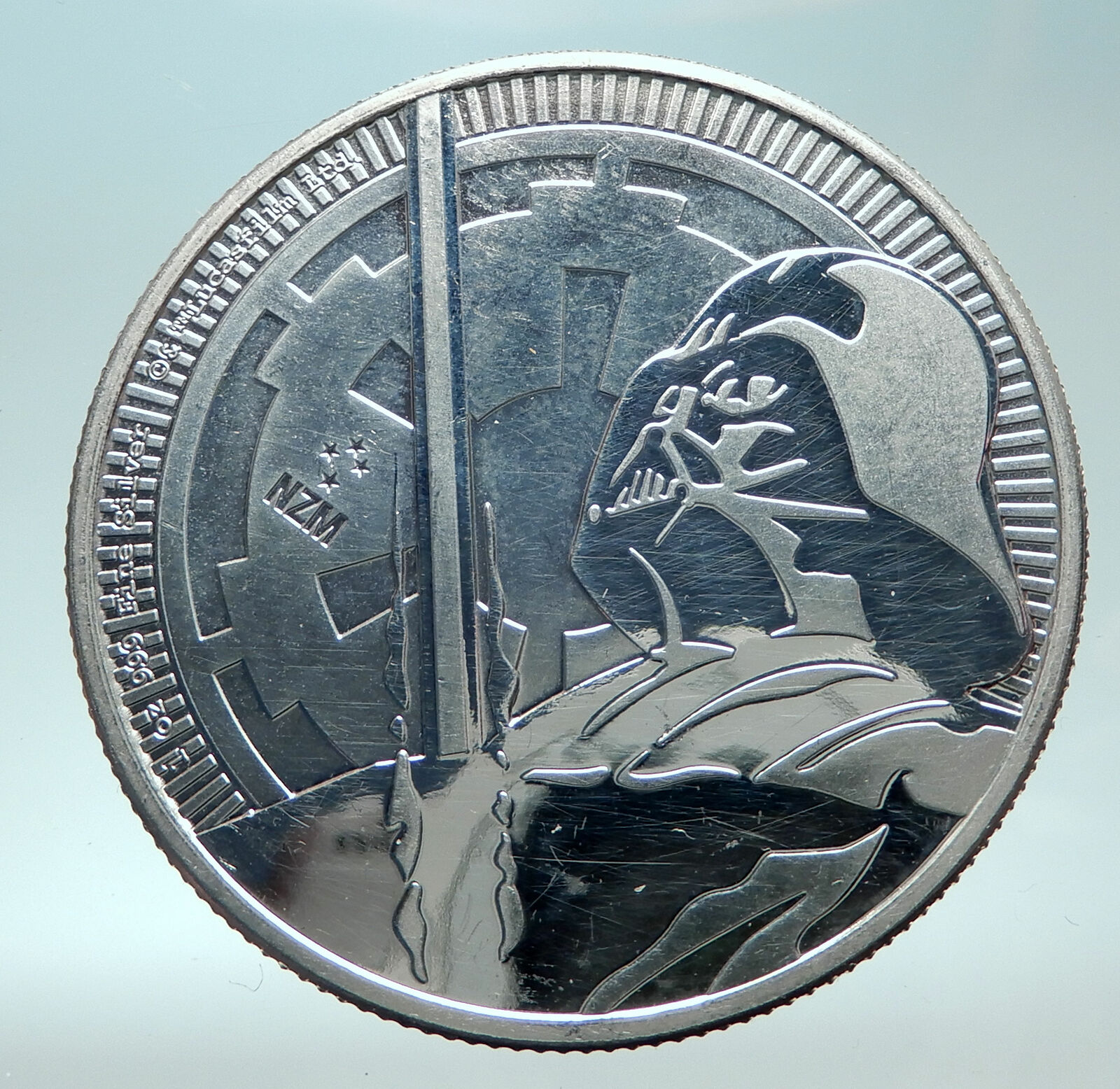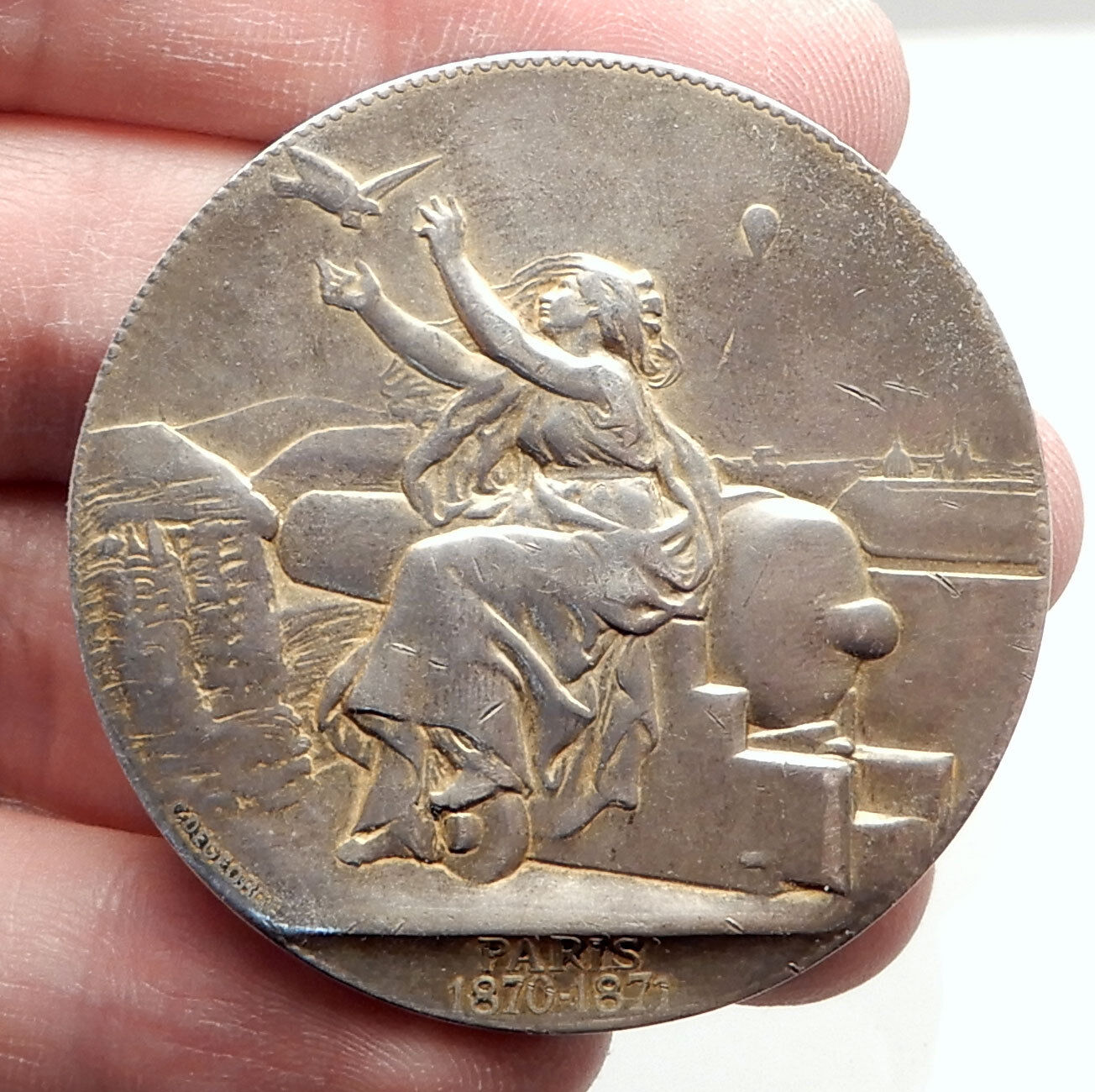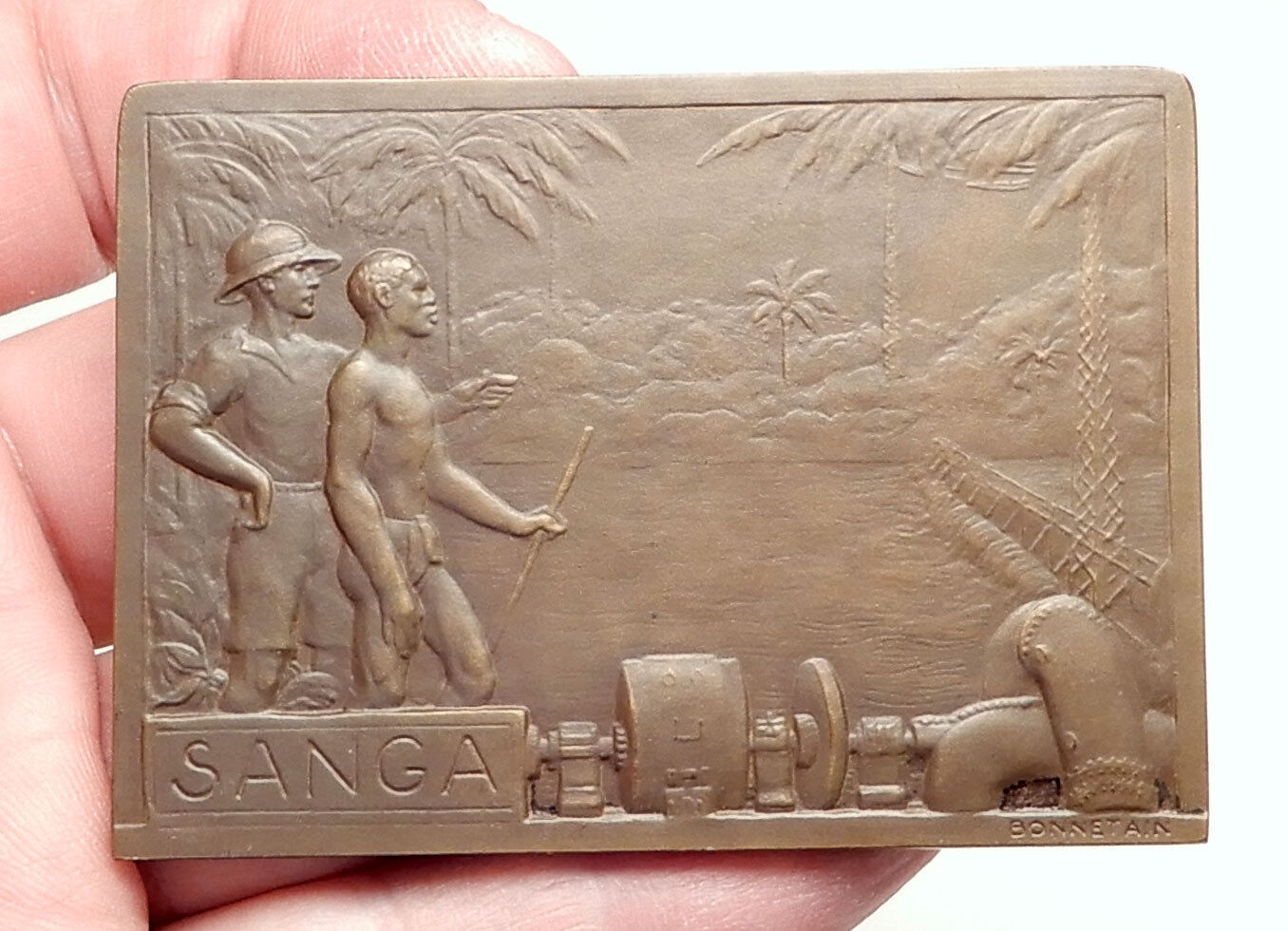|
Watervliet, N.Y. – Masonic Penny
Hudson River Chapter No. 262
Bronze Penny Token 29mm (10.35 grams)
H T W S S T K S, Plaque, level to left, bell to right.
HUDSON RIVER CHAPTER NO 262, R.A.M. CHARTERED FEBRUARY 7TH 1872 WATERVLIET, N.Y. ONE PENNY, Text within three circles.
You are bidding on the exact item pictured, provided with a Certificate of Authenticity and Lifetime Guarantee of Authenticity.
 Watervliet is a city in Albany County in the U.S. state of New York. The population was 10,254 as of the 2010 census. Watervliet is north of Albany, the capital of the state, and is bordered on the north, west, and south by the town of Colonie. The city is also known as “the Arsenal City”. Watervliet is a city in Albany County in the U.S. state of New York. The population was 10,254 as of the 2010 census. Watervliet is north of Albany, the capital of the state, and is bordered on the north, west, and south by the town of Colonie. The city is also known as “the Arsenal City”.
The explorer Henry Hudson arrived in the area of Watervliet around 1609. The area was first settled in 1643 as part of the Rensselaerswyck patroonship, under the direction of Kiliaen van Rensselaer. In 1710, Derrick van der Heyden operated a ferry from the Bleeker Farm (near 16th Street) across the Hudson River to Troy. Troops during the Revolutionary War used this ferry in 1777 on their way to Bemis Heights and Stillwater for the Battle of Saratoga. In 1786, a second ferry was started at Ferry Street (today 14th Street) over to Troy. The town of Watervliet was founded in 1788 and included all of present-day Albany County except what was in the city of Albany at the time. Because so many towns had been created from the town of Watervliet, it is regarded as the “mother of towns” in the county. In 1816, as the first post office was erected, corner of River and Ferry streets (Broadway and 14th Street), it took the name Watervliet.
The location of the future city was taken by the village of Gibbonsville (1824) and its successor West Troy, and the hamlet of Washington (later Port Schuyler). The farm owned by John Bleeker, stretching north from Buffalo Street (Broadway and 15th Street) to the farm owned by the Oothout family near 25th Street was purchased by Philip Schuyler, Isais Warren, Richard P. Hart, Nathan Warren, and others in 1823; they named it West Troy. Gibbonsville was the farm of James Gibbons (which he purchased in 1805), which stretched from North Street (8th Street) to Buffalo Street (15th Street). Washington was settled sometime before 1814 and was the area south of Gibbonsville and today the area of Watervliet south of the Arsenal; it became known as Port Schuyler in 1827. Although Gibbonsville and West Troy sat side by side (West Troy lying on Gibbonsville’s northern boundary), there was a rivalry between the two and each named and laid out their streets with no regard to the street names and grids of the other. In 1824 Gibbonsville became incorporated as a village, and in 1836 this was repealed when West Troy became incorporated as a village including Gibbonsville and Port Schuyler; and in 1847 the Watervliet post office changed its name to West Troy. In 1830, Gibbonsville had 559 people, West Troy 510, and Port Schuyler 450.
In 1865, present-day Watervliet was included in the Capital Police Force within the Troy District. This attempt at regional consolidation of municipal police failed and in 1870 the West Troy Police Force was organized.
By 1895, what was known as the town of Watervliet was reduced to the present-day city of Watervliet (village of West Troy at the time), town of Colonie, and the village/town of Green Island. Colonie would split off in 1895, and the city of Watervliet was incorporated in 1896 at the same time that Green Island became a town of its own.
In the early 19th century Watervliet became a major manufacturing community much like its neighbors Cohoes and Troy, thanks to bell foundries. The first was located on Water Street (Broadway), between 14th and 15th Streets, by Julius Hanks, and the first bell foundry in Gibbonsville was established in 1826 by Andrew Menelly, Sr. This would be the genesis of the Meneely Bell Foundry, which made thousands of bells that are still in use today from Iowa to the Czech Republic.
In 1813, the U.S. Federal Government purchased from James Gibbons 12 acres (49,000 m2) in Gibbonsville, in 1828 another 30 acres (120,000 m2), along with later purchases from S. S. Wandell and others. This land was used as the site for the Watervliet Arsenal, founded in 1813 during the War of 1812, and is the sole manufacturing facility for large caliber cannon. John C. Heenan, U.S. heavyweight boxing champion and contender for the world title in 1860, was once employed at the Arsenal.
The main route of the Erie Canal from Buffalo to Albany ran through Watervliet, and because the canal bypassed the city of Troy, the city’s business community decided a “short cut” was needed for convenient access to the Erie Canal without having to go through the Albany Basin. A side-cut to the Hudson was at Watervliet’s present-day 23rd Street (the Upper Side cut) finished in 1823, and another just south of the Arsenal (the Lower Side cut). A weigh station and a center for paying canal boat operators was here as well. As a result of canal boat crews being paid at the end of their trip, the areas around the side cut was once famous for gambling, saloons, and prostitution; there were more than 25 saloons within two blocks, with names like The Black Rag and Tub of Blood. The neighborhood around the side cut had the nickname of “Barbary Coast of the East”, Buffalo being the “Barbary Coast of the West”. In the 1880s, Watervliet had a reputation for over 100 fights a day and a body once in the week in the Canal.
Also linking Watervliet to the transportation network of the region was the Watervliet Turnpike and the Albany and Northern Railway. The Watervliet Turnpike Company in 1828 built present-day New York State Route 32 from the northern boundary of Albany north to the northern limit of Gibbonsville (now Broadway and 15th Street). The Albany and Northern Railway was built in 1852 connecting Watervliet to Albany, with a depot on Genesee Street; a few years later a new depot was built on Canal Street (Central Avenue) but was abandoned in favor of returning to the original location in 1864.
As of February 2020, the Mayor of Watervliet is Charles Patricelli, a Democrat who won the 2019 election unopposed.
The Ohio Street Methodist Episcopal Church Complex, St. Nicholas Ukrainian Catholic Church, Watervliet Arsenal, and Watervliet Side Cut Locks are listed on the National Register of Historic Places.
 Freemasonry or Masonry consists of fraternal organisations that trace their origins to the local fraternities of stonemasons, which from the end of the fourteenth century regulated the qualifications of stonemasons and their interaction with authorities and clients. The degrees of freemasonry retain the three grades of medieval craft guilds, those of Apprentice, Journeyman or fellow (now called Fellowcraft), and Master Mason. These are the degrees offered by Craft (or Blue Lodge) Freemasonry. Members of these organisations are known as Freemasons or Masons. There are additional degrees, which vary with locality and jurisdiction, and are usually administered by different bodies than the craft degrees. Freemasonry or Masonry consists of fraternal organisations that trace their origins to the local fraternities of stonemasons, which from the end of the fourteenth century regulated the qualifications of stonemasons and their interaction with authorities and clients. The degrees of freemasonry retain the three grades of medieval craft guilds, those of Apprentice, Journeyman or fellow (now called Fellowcraft), and Master Mason. These are the degrees offered by Craft (or Blue Lodge) Freemasonry. Members of these organisations are known as Freemasons or Masons. There are additional degrees, which vary with locality and jurisdiction, and are usually administered by different bodies than the craft degrees.
The basic, local organisational unit of Freemasonry is the Lodge. The Lodges are usually supervised and governed at the regional level (usually coterminous with either a state, province, or national border) by a Grand Lodge or Grand Orient. There is no international, worldwide Grand Lodge that supervises all of Freemasonry; each Grand Lodge is independent, and they do not necessarily recognise each other as being legitimate.
Modern Freemasonry broadly consists of two main recognition groups. Regular Freemasonry insists that a volume of scripture is open in a working lodge, that every member profess belief in a Deity, that no women are admitted, and that the discussion of religion and politics is banned. Continental Freemasonry is now the general term for the “liberal” jurisdictions who have removed some, or all, of these restrictions.
 The Hudson River is a 315-mile (507 km) river that flows from north to south primarily through eastern New York in the United States. The river originates in the Adirondack Mountains of Upstate New York, flows southward through the Hudson Valley to the Upper New York Bay between New York City and Jersey City. It eventually drains into the Atlantic Ocean at New York Harbor. The river serves as a political boundary between the states of New Jersey and New York at its southern end. Further north, it marks local boundaries between several New York counties. The lower half of the river is a tidal estuary, deeper than the body of water into which it flows, occupying the Hudson Fjord, an inlet which formed during the most recent period of North American glaciation, estimated at 26,000 to 13,300 years ago. Tidal waters influence the Hudson’s flow from as far north as the city of Troy. The Hudson River is a 315-mile (507 km) river that flows from north to south primarily through eastern New York in the United States. The river originates in the Adirondack Mountains of Upstate New York, flows southward through the Hudson Valley to the Upper New York Bay between New York City and Jersey City. It eventually drains into the Atlantic Ocean at New York Harbor. The river serves as a political boundary between the states of New Jersey and New York at its southern end. Further north, it marks local boundaries between several New York counties. The lower half of the river is a tidal estuary, deeper than the body of water into which it flows, occupying the Hudson Fjord, an inlet which formed during the most recent period of North American glaciation, estimated at 26,000 to 13,300 years ago. Tidal waters influence the Hudson’s flow from as far north as the city of Troy.
The river is named after Henry Hudson, an Englishman sailing for the Dutch East India Company, who explored it in 1609, and after whom Hudson Bay in Canada is also named. It had previously been observed by Italian explorer Giovanni da Verrazzano sailing for King Francis I of France in 1524, as he became the first European known to have entered the Upper New York Bay, but he considered the river to be an estuary. The Dutch called the river the North River – with the Delaware River called the South River – and it formed the spine of the Dutch colony of New Netherland. Settlements of the colony clustered around the Hudson, and its strategic importance as the gateway to the American interior led to years of competition between the English and the Dutch over control of the river and colony.
During the eighteenth century, the river valley and its inhabitants were the subject and inspiration of Washington Irving, the first internationally acclaimed American author. In the nineteenth century, the area inspired the Hudson River School of landscape painting, an American pastoral style, as well as the concepts of environmentalism and wilderness. The Hudson was also the eastern outlet for the Erie Canal, which, when completed in 1825, became an important transportation artery for the early-19th-century United States.
|




 Watervliet is a city in Albany County in the U.S. state of New York. The population was 10,254 as of the 2010 census. Watervliet is north of Albany, the capital of the state, and is bordered on the north, west, and south by the town of Colonie. The city is also known as “the Arsenal City”.
Watervliet is a city in Albany County in the U.S. state of New York. The population was 10,254 as of the 2010 census. Watervliet is north of Albany, the capital of the state, and is bordered on the north, west, and south by the town of Colonie. The city is also known as “the Arsenal City”. Freemasonry or Masonry consists of fraternal organisations that trace their origins to the local fraternities of stonemasons, which from the end of the fourteenth century regulated the qualifications of stonemasons and their interaction with authorities and clients. The degrees of freemasonry retain the three grades of medieval craft guilds, those of Apprentice, Journeyman or fellow (now called Fellowcraft), and Master Mason. These are the degrees offered by Craft (or Blue Lodge) Freemasonry. Members of these organisations are known as Freemasons or Masons. There are additional degrees, which vary with locality and jurisdiction, and are usually administered by different bodies than the craft degrees.
Freemasonry or Masonry consists of fraternal organisations that trace their origins to the local fraternities of stonemasons, which from the end of the fourteenth century regulated the qualifications of stonemasons and their interaction with authorities and clients. The degrees of freemasonry retain the three grades of medieval craft guilds, those of Apprentice, Journeyman or fellow (now called Fellowcraft), and Master Mason. These are the degrees offered by Craft (or Blue Lodge) Freemasonry. Members of these organisations are known as Freemasons or Masons. There are additional degrees, which vary with locality and jurisdiction, and are usually administered by different bodies than the craft degrees. The Hudson River is a 315-mile (507 km) river that flows from north to south primarily through eastern New York in the United States. The river originates in the Adirondack Mountains of Upstate New York, flows southward through the Hudson Valley to the Upper New York Bay between New York City and Jersey City. It eventually drains into the Atlantic Ocean at New York Harbor. The river serves as a political boundary between the states of New Jersey and New York at its southern end. Further north, it marks local boundaries between several New York counties. The lower half of the river is a tidal estuary, deeper than the body of water into which it flows, occupying the Hudson Fjord, an inlet which formed during the most recent period of North American glaciation, estimated at 26,000 to 13,300 years ago. Tidal waters influence the Hudson’s flow from as far north as the city of Troy.
The Hudson River is a 315-mile (507 km) river that flows from north to south primarily through eastern New York in the United States. The river originates in the Adirondack Mountains of Upstate New York, flows southward through the Hudson Valley to the Upper New York Bay between New York City and Jersey City. It eventually drains into the Atlantic Ocean at New York Harbor. The river serves as a political boundary between the states of New Jersey and New York at its southern end. Further north, it marks local boundaries between several New York counties. The lower half of the river is a tidal estuary, deeper than the body of water into which it flows, occupying the Hudson Fjord, an inlet which formed during the most recent period of North American glaciation, estimated at 26,000 to 13,300 years ago. Tidal waters influence the Hudson’s flow from as far north as the city of Troy. 




